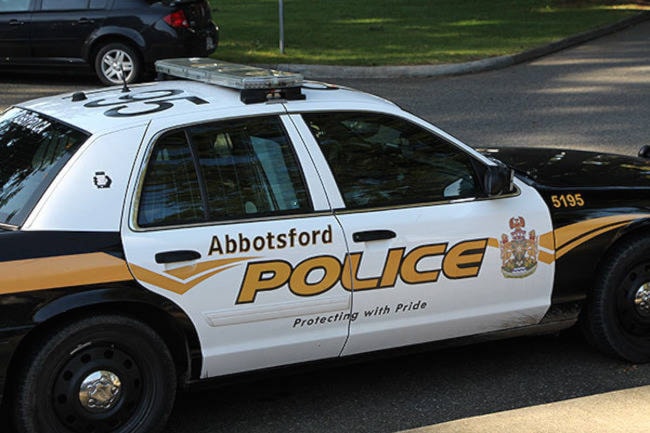With more public debate about police officers’ use of force and relations between visible minorities and police forces, The News took a data-driven look at how Abbotsford’s police department uses force and reflects its community. This is one of three pieces on those topics. For the others, click the links at the bottom of the story.
Abbotsford’s police board isn’t planning to follow the lead of other local governments and call for an end to police street checks.
Vancouver and Victoria councils have passed resolutions recommending their local police boards ban the use of street checks – the stopping of people not suspected of having committed a crime.
In some jurisdictions, studies show that minorities are stopped by police at a much higher rate than whites, causing Black, Indigenous and other minorities to feel like they are targeted by police while going about their day-to-day business.
In Abbotsford, however, a 2019 review obtained by The News suggested that visible minorities weren’t over-represented in street checks by local police.
Mayor Henry Braun – who is also chair of the police board that oversees the Abbotsford Police Department – says there are no immediate plans to stop such checks in Abbotsford. But he also cited statistics that suggest the number of such checks was much lower in 2020 than in previous years.
APD Deputy Chief Paulette Freill says the force “will not be arbitrarily documenting people’s information and doing those sort of street checks.”
A review conducted by the department in 2019 showed that in 2018, visible minorities were subject to about one-quarter of the approximately 1,800 street checks conducted that year. That’s slightly below what would be expected given Abbotsford’s population.
Indigenous people represented about eight per cent of the total in 2018. The figure for First Nations people is slightly lower over the entire decade, but still slightly higher than the population’s representation within Abbotsford.
Freill says a large proportion of 2018’s checks occurred in the city’s downtown core, where Indigenous people comprise a higher proportion of the neighbourhood population.
The review – which goes back to 2008 – suggests that First Nations were checked less frequently when street checks were conducted more broadly across Abbotsford.
“Most of the street checks were done in three areas of the city, [in 2018],” Freill said.
“One was the downtown core, at Peardonville [industrial area], and at Clearbrook corridor. The downtown core is where we have most of our Indigenous population … It’s not that we were targeting Indigenous people.”
APD spokesperson Sgt. Judy Bird said the 2016 stabbing at Abbotsford Senior Secondary and the 2017 killing of Const. John Davidson influenced how police conducted street checks in 2018. Both murders were perpetrated by people who weren’t permanent residents of Abbotsford.
“Our street checks went up because we were concerned with the increase of those travelling through our community who we didn’t recognize. [It was] us just inquiring as to who they are and why they’re here. It’s not to focus our intention on any specific race or ethnicity. It is a conversation you have as to why are you in Abbotsford, what brings you here, what are your resources and what is your destination and do you need any assistance while you’re here.”
South Asians comprised about 13 per cent of those checked in 2018 and about 10 per cent of all those checked between 2008 and 2018. About one-quarter of Abbotsford’s population are of South Asian descent, the 2016 census indicated.
Figures from 2017 show a much larger number of checks of South Asian people. That, Freill said, was due to checks related to the Lower Mainland Gang Conflict, which involved primarily groups composed of young South Asian people.
Black people also were not over-represented in street checks, according to the 2019 review.
Freill said police will be following guidelines on street checks from the provincial government.
“We are going to support officers initiating conversations with people in the community, of course, because that’s what we do – we talk to people.”
Braun told The News in late July that, to date, there had been 100 street checks conducted in Abbotsford. That suggests the number of street checks has plunged since 2018.
Just two years ago, police conducted 1,800 street checks. The lowest number of street checks performed between 2008 and 2018 was 528 in 2013.
Braun said the police board has discussed street checks in the past and may do so when it next meets this fall, but that he doesn’t plan to push for them to be stopped. Part of the reason, he suggested, was because data suggested those being stopped in Abbotsford were broadly reflective of the community at large.
POLICE/2020: Abbotsford Police Department much less diverse than city, despite recruitment efforts
POLICE/2020: Abbotsford police officers pointing their guns and using tasers more often in 2020
Do you have something to add to this story, or something else we should report on? Email:
tolsen@abbynews.com
@ty_olsen
Like us on Facebook and follow us on Twitter

